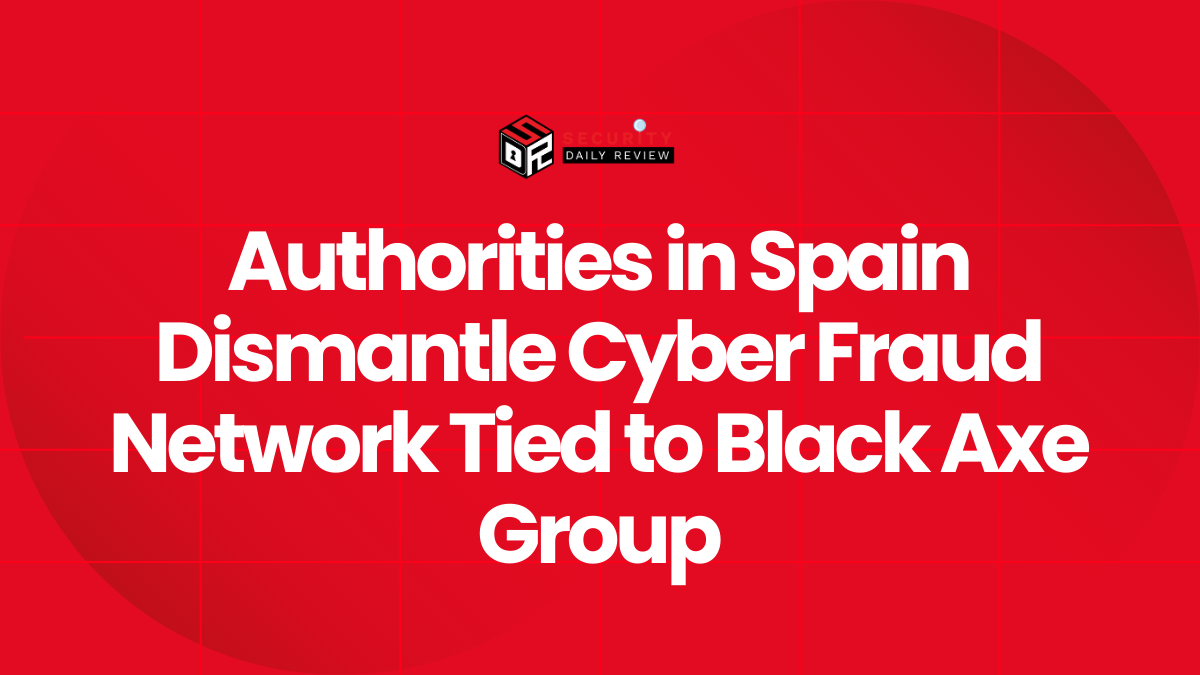Distributed Denial of Service (DDoS) attacks are a growing concern for businesses that rely on SaaS and other online services. A successful DDoS attack can disrupt critical operations for service providers, leading to a supply chain attack for their customers and end users. These attacks can cripple operations by overwhelming a network’s capacity, making it inaccessible to legitimate users.
This comprehensive guide delves into the intricacies of DDoS attacks, their mechanisms, common types, and effective mitigation strategies, empowering enterprise businesses to safeguard their online presence.
Understanding DDoS Attacks: A Primer for Enterprise Businesses
A DDoS attack is a malicious cyberattack designed to disrupt the normal traffic of a targeted server, service, or network by overwhelming it with a flood of internet traffic. Imagine a bustling highway suddenly choked with an unexpected traffic jam, preventing legitimate vehicles from reaching their destination. This analogy aptly describes the impact of a DDoS attack.
How DDoS Attacks Work: A Deep Dive into the Mechanics
DDoS attacks are orchestrated using networks of internet-connected devices, known as botnets. These botnets consist of compromised computers and other devices, including Internet of Things (IoT) devices, infected with malware that allows attackers to control them remotely. Each individual device within the botnet is referred to as a bot or zombie.
Once an attacker establishes a botnet, they can issue remote instructions to each bot, directing them to target a specific victim’s server or network. Upon receiving these instructions, each bot in the botnet simultaneously sends requests to the target’s IP address, overwhelming the server or network with a surge of traffic. This overwhelming volume of traffic can render the target inaccessible to legitimate users, effectively causing a denial-of-service.
The challenge in combating DDoS attacks lies in the fact that each bot is a legitimate internet device, making it difficult to distinguish attack traffic from normal traffic. This characteristic makes DDoS attacks a formidable threat, requiring sophisticated mitigation strategies to effectively counter them.
Identifying a DDoS Attack: Recognizing the Warning Signs
While the most obvious symptom of a DDoS attack is a sudden slowdown or unavailability of a website or service, it’s crucial to remember that other factors, such as legitimate traffic spikes, can also cause similar performance issues. Therefore, thorough investigation is often necessary to confirm a DDoS attack.
Here are some telltale signs of a DDoS attack that traffic analytics tools can help identify:
Suspicious Traffic from Single IP Addresses: An unusual amount of traffic originating from a single IP address or a specific IP range can indicate a potential attack.
Traffic Flood with Shared Behavioral Profiles: A surge of traffic from users exhibiting identical behavioral patterns, such as device type, geolocation, or web browser version, can raise suspicion.
Unexplained Surge in Requests to a Specific Page or Endpoint: An abrupt increase in requests directed towards a particular page or endpoint without any apparent reason can be a red flag.
Odd Traffic Patterns: Irregular traffic patterns, such as spikes at unusual hours or unnatural patterns like a spike every 10 minutes, may signal a DDoS attack.
It’s important to note that there are other, more specific signs of DDoS attacks that can vary depending on the type of attack.
Unveiling the Different Types of DDoS Attacks: A Taxonomy of Threats
DDoS attacks can be categorized into three primary types, each targeting different components of a network connection. Understanding these attack types is crucial for developing effective mitigation strategies.
Application Layer Attacks: Targeting the Heart of Web Services
Also known as Layer 7 DDoS attacks, these attacks aim to exhaust the target’s resources, creating a denial-of-service by overloading the application layer of the network stack. This layer is responsible for generating web pages on the server and delivering them in response to HTTP requests.
While a single HTTP request is computationally inexpensive for the client, it can be resource-intensive for the target server, especially when it involves loading multiple files and executing database queries to generate a web page.
Layer 7 attacks are notoriously difficult to defend against because it can be challenging to differentiate malicious traffic from legitimate traffic.
a) HTTP Flood: This attack resembles repeatedly pressing the refresh button in a web browser on numerous computers simultaneously. A massive influx of HTTP requests floods the server, overwhelming it and causing a denial-of-service.
HTTP flood attacks can range from simple to complex implementations. Simpler versions might target a single URL with a consistent range of attacking IP addresses, referrers, and user agents. More complex versions, however, utilize a vast number of attacking IP addresses and target random URLs with random referrers and user agents.
Protocol Attacks: Exploiting Network Communication Weaknesses
Protocol attacks, also known as state-exhaustion attacks, disrupt services by over-consuming server resources or the resources of network equipment like firewalls and load balancers. These attacks exploit vulnerabilities in layers 3 and 4 of the protocol stack to render the target inaccessible.
a) SYN Flood: This attack exploits the TCP handshake, a sequence of communications that two computers use to initiate a network connection. The attacker sends the target a large number of TCP “Initial Connection Request” SYN packets with spoofed source IP addresses. The target machine responds to each connection request and waits for the final step in the handshake, which never occurs, exhausting the target’s resources in the process.
Imagine a worker in a supply room receiving requests from the front of a store. The worker receives a request, retrieves the package, and waits for confirmation before delivering the package to the front. If the worker receives numerous package requests without confirmation, they eventually become overwhelmed and unable to fulfill any further requests. This scenario mirrors the effect of a SYN flood attack.
3. Volumetric Attacks: Choking Bandwidth and Overloading Infrastructure
This category of attacks aims to create network congestion by consuming all available bandwidth between the target and the broader internet. Attackers achieve this by sending massive amounts of data to the target using amplification techniques or other methods, such as requests from a botnet.
a) DNS Amplification: This attack leverages the amplification effect of open DNS servers. By sending a request to an open DNS server with a spoofed IP address (the victim’s IP address), the target IP address receives a response from the server. This response is significantly larger than the initial request, effectively amplifying the attack traffic.
Imagine someone calling a restaurant and saying, “I’ll have one of everything, please call me back and repeat my whole order,” where the callback number belongs to the victim. With minimal effort, a lengthy response is generated and sent to the victim, similar to how DNS amplification works.
Mitigating DDoS Attacks: Safeguarding Your Enterprise’s Online Presence
The primary challenge in mitigating a DDoS attack lies in differentiating between attack traffic and legitimate traffic. It’s crucial to distinguish between a surge in traffic caused by genuine customer interest and traffic originating from malicious attackers. This distinction is vital to avoid blocking legitimate users while effectively mitigating the attack.
In the modern internet, DDoS traffic can take various forms, ranging from un-spoofed single-source attacks to complex and adaptive multi-vector attacks. Multi-vector DDoS attacks employ multiple attack pathways to overwhelm the target simultaneously, potentially distracting mitigation efforts on any single trajectory.
For instance, an attack that simultaneously targets multiple layers of the protocol stack, such as a DNS amplification (targeting layers 3/4) coupled with an HTTP flood (targeting layer 7), exemplifies a multi-vector DDoS attack.
Mitigating multi-vector DDoS attacks demands a diverse range of strategies to counter different attack vectors. The more complex the attack, the more likely it is that the attack traffic will be difficult to separate from normal traffic. Attackers aim to blend in as seamlessly as possible, making mitigation efforts challenging.
Indiscriminate traffic dropping or limiting can inadvertently block legitimate traffic, while attackers may adapt and modify their strategies to circumvent countermeasures. To effectively overcome complex DDoS attacks, a layered solution is essential.
1. Blackhole Routing: A Last Resort for Immediate Protection
Blackhole routing is a mitigation technique available to network administrators. It involves creating a blackhole route and funneling traffic into that route. In its simplest form, blackhole filtering, without specific restriction criteria, routes both legitimate and malicious network traffic to a null route or blackhole, effectively dropping it from the network.
If an internet property experiences a DDoS attack, its internet service provider (ISP) may redirect all the site’s traffic into a blackhole as a defense mechanism. However, this solution is not ideal as it effectively grants the attacker their desired outcome, making the network inaccessible.
2. Rate Limiting: Controlling the Flow of Requests
Rate limiting involves limiting the number of requests a server accepts within a specific time window. This technique can be useful in mitigating denial-of-service attacks, slowing down web scrapers from stealing content, and preventing brute force login attempts.
While rate limiting can be a valuable tool, it’s unlikely to be sufficient to effectively handle complex DDoS attacks alone. Nevertheless, it remains a crucial component of a comprehensive DDoS mitigation strategy.
3. Web Application Firewall (WAF): Shielding Against Layer 7 Attacks
A WAF is a security tool that can assist in mitigating layer 7 DDoS attacks. By placing a WAF between the internet and an origin server, it acts as a reverse proxy, protecting the targeted server from specific types of malicious traffic.
WAFs filter requests based on a set of rules designed to identify DDoS tools, effectively impeding layer 7 attacks. A key advantage of an effective WAF is its ability to quickly implement custom rules in response to an attack.
4. Anycast Network Diffusion: Distributing the Attack Load
This mitigation approach utilizes an Anycast network to scatter attack traffic across a network of distributed servers, effectively absorbing the traffic and mitigating its disruptive impact.
Imagine channeling a rushing river into multiple smaller channels. This approach spreads the impact of the distributed attack traffic, making it manageable and diffusing its disruptive capabilities.
The Magnitude of DDoS Attacks: A Look at Notable Incidents
DDoS attacks have evolved from nuisance attacks to sophisticated, large-scale events capable of crippling critical infrastructure and disrupting everyday life. These attacks are not just numbers on a screen; they represent real-world consequences for individuals, businesses, and even entire nations. Here’s a closer look at some of the most significant DDoS attacks in recent history:
1. Google DDoS Attack 2017: A Record-Breaking Event
In September 2017, Google’s services faced the largest DDoS attack ever recorded, reaching a staggering 2.54 Tbps. The attackers employed a sophisticated technique known as “amplification.” They sent spoofed packets to 180,000 web servers, which, in turn, sent responses to Google, amplifying the attack traffic. This wasn’t a one-off incident; the attackers had launched multiple DDoS attacks against Google’s infrastructure over the previous six months, demonstrating their determination and resourcefulness.
2. AWS DDoS Attack 2020: Leveraging CLDAP Servers
In February 2020, Amazon Web Services (AWS) reported mitigating a massive DDoS attack reaching a peak traffic rate of 2.3 Tbps. While AWS did not disclose the targeted customer, the attackers exploited a vulnerability in Connection-less Lightweight Directory Access Protocol (CLDAP) servers. CLDAP, an alternative to LDAP, has become a popular target for DDoS attackers due to its inherent amplification potential. This attack highlighted the growing trend of attackers exploiting vulnerabilities in lesser-known protocols to launch powerful attacks.
3. GitHub DDoS Attack 2018 : Exploiting Memcached Amplification
In February 2018, GitHub, a popular online code management service, faced a massive DDoS attack reaching 1.3 Tbps and sending packets at a rate of 126.9 million per second. This attack was a memcached DDoS attack, utilizing the amplification effect of a popular database caching system known as memcached. Attackers flooded memcached servers with spoofed requests, amplifying their attack by a factor of about 50,000x. Fortunately, GitHub was using a DDoS protection service that automatically detected the attack within 10 minutes of its initiation, allowing them to quickly mitigate the attack, which lasted only about 20 minutes.
4. Dyn DDoS Attack 2016: Disrupting Major Websites with Mirai
In October 2016, a massive DDoS attack targeted Dyn, a major DNS provider, causing widespread disruption for numerous major websites, including Airbnb, Netflix, PayPal, Visa, Amazon, The New York Times, Reddit, and GitHub. The attack utilized malware called Mirai, which creates botnets from compromised Internet of Things (IoT) devices like cameras, smart TVs, radios, printers, and even baby monitors. These compromised devices are programmed to send requests to a single victim, generating the attack traffic.
Dyn successfully resolved the attack within a day, but the motive behind it remains unknown. Hacktivist groups claimed responsibility for the attack in response to WikiLeaks founder Julian Assange being denied internet access in Ecuador, but no evidence supports this claim. Suspicions also point to a disgruntled gamer as a potential perpetrator. This attack highlighted the growing threat posed by IoT devices, which can be easily compromised and turned into weapons for DDoS attacks.
5. GitHub DDoS Attack 2015: A Politically Motivated Assault
This politically motivated attack, the largest DDoS attack at the time, targeted GitHub for several days, adapting to implemented DDoS mitigation strategies. The attack traffic originated in China and specifically targeted the URLs of two GitHub projects aimed at circumventing Chinese state censorship. The attack’s intent was likely to pressure GitHub into removing these projects.
The attack traffic was generated by injecting JavaScript code into the browsers of users visiting Baidu, China’s most popular search engine. Other websites using Baidu’s analytics services also injected the malicious code, causing infected browsers to send HTTP requests to the targeted GitHub pages. After the attack, it was determined that the malicious code was not originating from Baidu but rather being added by an intermediary service. This attack demonstrated the potential for political motives to drive DDoS attacks, targeting specific content and services deemed undesirable by certain governments.
6. Spamhaus DDoS Attack 2013: Targeting a Spam-Fighting Organization
Another largest-ever-at-the-time attack targeted Spamhaus, an organization combating spam emails and spam-related activities. Spamhaus filters approximately 80% of all spam, making it a prime target for individuals seeking to see spam emails reach their intended recipients.
The attack directed traffic to Spamhaus at a rate of 300 Gbps. Upon the attack’s commencement, Spamhaus signed up for Cloudflare’s DDoS protection service, which effectively mitigated the attack. The attackers responded by targeting specific internet exchanges and bandwidth providers in an attempt to disrupt Cloudflare. While this attack did not achieve its goal, it caused significant issues for LINX, the London Internet exchange. The primary culprit of the attack was a teenage hacker-for-hire in Britain who was paid to launch the DDoS attack. This attack highlighted the potential for DDoS attacks to target organizations working to combat cybercrime, demonstrating the complex and often malicious motivations behind these attacks.
7. Mafiaboy DDoS Attack 2000: A Teenage Hacker’s Devastating Impact
In 2000, a 15-year-old hacker known as “Mafiaboy” took down several major websites, including CNN, Dell, E-Trade, eBay, and Yahoo!, which was the most popular search engine at the time. This attack had devastating consequences, including disrupting the stock market.
Mafiaboy, later revealed to be a high schooler named Michael Calce, orchestrated the attack by compromising the networks of several universities and utilizing their servers to conduct the DDoS attack. The aftermath of this attack directly led to the development of numerous cybercrime laws in place today. This attack, while relatively small compared to modern DDoS attacks, demonstrated the potential for even young individuals to cause significant damage with limited resources.
8. Estonia DDoS Attack 2007: A Glimpse into Cyber Warfare
In April 2007, Estonia was hit with a massive DDoS attack targeting government services, financial institutions, and media outlets. This attack had a devastating impact as Estonia’s government was an early adopter of online government services, with minimal reliance on paper-based processes. Even national elections were conducted online.
The attack, widely considered the first act of cyber warfare, was a response to a political conflict with Russia over the relocation of the “Bronze Soldier of Tallinn,” a World War II monument. The Russian government was suspected of involvement, and an Estonian national from Russia was arrested. However, the Russian government has not allowed Estonian law enforcement to conduct further investigations within Russia. This incident led to the development of international laws for cyber warfare. This attack demonstrated the potential for DDoS attacks to be used as a tool in international conflicts, highlighting the growing threat of cyber warfare.
Conclusion
DDoS attacks are a persistent and evolving threat to enterprise businesses. Understanding the mechanics of these attacks, recognizing the warning signs, and implementing robust mitigation strategies are crucial for safeguarding your online presence.
By adopting a proactive approach to DDoS mitigation, enterprises can minimize the impact of these attacks, ensuring business continuity and protecting their valuable assets. Investing in advanced security solutions, staying informed about emerging threats, and maintaining a vigilant posture are essential for navigating the ever-changing landscape of cyberattacks.
Remember, the key to effectively combating DDoS attacks lies in a layered approach, combining multiple mitigation strategies to create a comprehensive defense against this formidable threat. By embracing a proactive security mindset, enterprises can confidently navigate the digital world, minimizing risks and maximizing their online success.









